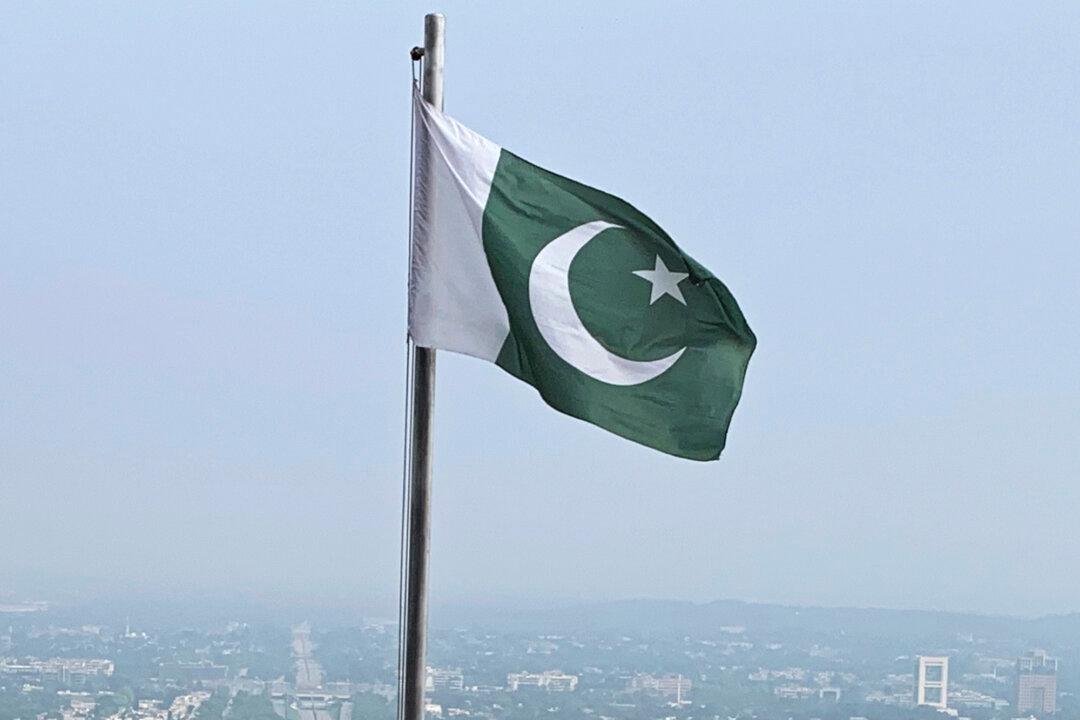ISLAMABAD—Pakistan’s air force launched retaliatory airstrikes early Thursday on Iran allegedly targeting militant positions, an attack that killed at least seven people and further raised tensions between the neighboring nations.
The strikes in Sistan and Baluchestan province follow Iran’s attack Tuesday on Pakistani soil that killed two children in the southwestern Baluchistan province.
The strikes imperil diplomatic relations between the two neighbors, as Iran and nuclear-armed Pakistan have long regarded each other with suspicion over militant attacks.
The attacks also raised the threat of violence spreading in a Middle East unsettled by Israel’s war with Hamas terrorists in the Gaza Strip. Iran also staged airstrikes late Monday in Iraq and Syria over an ISIS-claimed suicide bombing that killed over 90 people earlier this month. Iraq has recalled its ambassador from Iran for consultations.
Pakistan’s Foreign Ministry described their attack as “a series of highly coordinated and specifically targeted precision military strikes.”
“This morning’s action was taken in light of credible intelligence of impending large scale terrorist activities,” the Foreign Ministry said in a statement. “This action is a manifestation of Pakistan’s unflinching resolve to protect and defend its national security against all threats.”
Several insurgent groups operate in Iran and Pakistan, including the Jaish al-Adl Sunni terrorist group that was targeted by Tehran in its own strike. They all have a common goal of an independent Baluchistan for ethnic Baluch areas in Afghanistan, Iran, and Pakistan.
Pakistan’s Baluchistan province, as well as Iran’s neighboring Sistan and Baluchestan province, have faced a low-level insurgency by Baluch nationalists for more than two decades.
Pakistan named its operation “Marg Bar Sarmachar.” In Iranian Farsi, “marg bar” means “death to”—and is a famous saying in Iran since its 1979 Islamic Revolution used to refer to both the United States and Israel. In the local Baluch language, “sarmachar” means guerrilla and is used by the militants operating in the cross-border region.
A deputy governor of Iran’s Sistan and Baluchestan province, Ali Reza Marhamati, gave the casualty figures from Thursday’s strike in a telephone interview, saying the dead included three women and four children near the town of Saravan along the border in Iran’s Sistan and Baluchestan province. He added that the dead were not Iranian citizens and acknowledged a separate blast near Saravan as well.
HalVash, an advocacy group for the Baluch people, shared images online that appeared to show the remains of the munitions used in the attack. It said a number of homes had been struck in Saravan. It shared videos showing a mud-walled building destroyed and smoke rising over the strike immediately after.
Thursday’s development came a day after Pakistan recalled its ambassador to Tehran because of Tuesday’s strikes by Iran inside Pakistan’s southwestern Baluchistan province. Iran claimed it targeted bases for a militant Sunni separatist group. It drew strong condemnation from Pakistan, which denounced the attack as a “blatant violation” of its airspace and said it killed two children.
Iranian state television, quoting an anonymous official after the strike, said Tehran strongly condemned the attack and “demanded an immediate explanation” from Pakistan.
The risk of escalation remained Thursday as Iran’s military will begin a planned annual air defense drill from its port of Chabahar near Pakistan all across the south of the country to Iraq. The drill, Velayat 1402, will include live fire from aircraft, drones, and air defense systems.
Iran and Pakistan share a 900-kilometer (560-mile), largely lawless border in which smugglers and militants freely pass between the two nations. The route is also key to global opium shipments coming out of Afghanistan.
For both Iran and Pakistan, the cross-border attacks renew questions about the preparedness of their own militaries, particularly their radar and air defense systems.
For Pakistan, such systems are crucial as tensions always remain at a low boil with India, their nuclear-armed rival. Their equipment has long been deployed along the frontier, rather than its border with Iran. For Iran, it relies on those systems against potential strikes by its main enemy, the United States.







